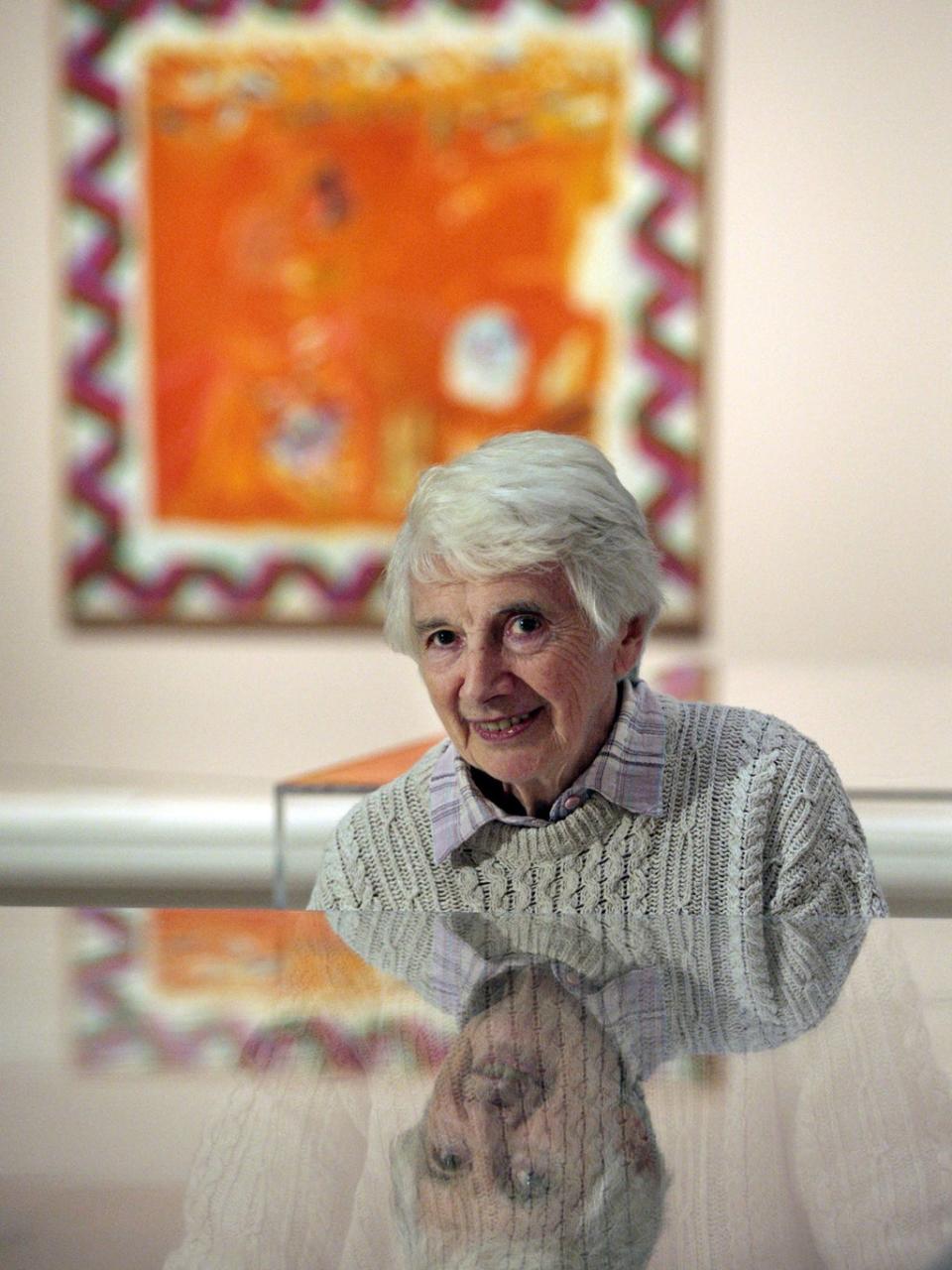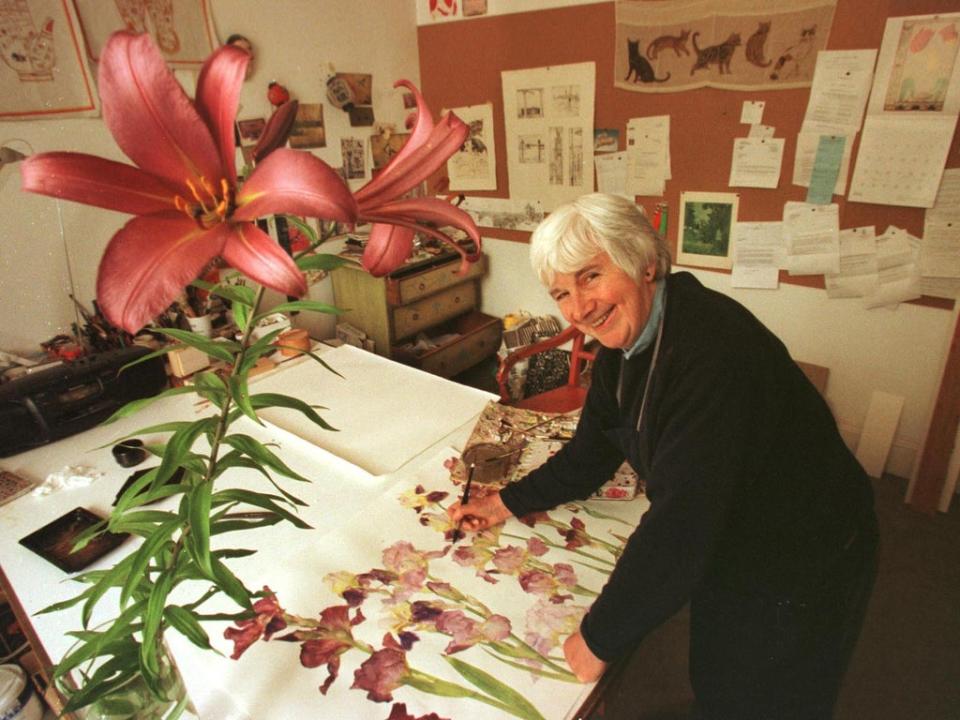Elizabeth Blackadder: Scottish painter known for her expressive botanical paintings

Elizabeth Blackadder, a renowned painter and printmaker who became the first woman to be elected to both the Royal Scottish Academy and the Royal Academy, has died at the age of 89. She became an important figure in Scotland’s cultural history, and her lively botanical paintings, as much an expression of herself as of the natural world around her, have appeared in galleries around the world.
Blackadder found her passion for flowers and botany early on in life. Her parents, fearing for their daughter’s safety following the bombing of Clydebank during the blitz, sent her to stay with her grandparents in Holy Loch, where she passed the time collecting flowers and pressing them for later research. This fascination with botany would later resurface in her distinctive brushwork and floral compositions.
Critics note, however, that it wasn’t until the mid-Sixties that Blackadder’s work began to feature her distinctive style, inspired by abstract schools that were cropping up in the art world. While early paintings often showed experiments with different forms and styles, her work was often rooted in tradition. She was drawn to Byzantine art after travelling to Greece, Italy and Yugoslavia in 1954 on a travel scholarship, while a further scholarship a year later in Italy saw her immersed in Renaissance schools of thought.
After graduating from Edinburgh College of Art (ECA) in 1954, Blackadder continued to develop her style, eventually drawn in by the freedom of expression that non-figurative styles afforded her. During the Eighties and Nineties, she pushed this style further, her work becoming more intense.
Dame Elizabeth Violet Blackadder was born in Falkirk, Scotland, on 24 September 1931, the third child of Thomas and Violet Blackadder. Elizabeth came from a family of engineers, her grandfather’s factory only a stone’s throw from the house where she was born. Biographers describe her as a quiet child, whose interests lay in her books and the natural world around her.

While studying at ECA, which she attended between 1949 and 1954, she was taught by key figures from the Scottish art scene at the time, including Sir William Gillies and Sir Robin Philipson. After graduating with a first class degree in fine art, she was awarded the Carnegie travelling scholarship and the Andrew Grant postgraduate scholarship.
Blackadder met her husband, fellow painter John Houston, while studying at ECA. The couple married in 1956 and stayed together until Houston’s death in 2008. In 1959, Blackadder had her first solo show at the 57 Gallery in Edinburgh, which featured work from her travels with her husband.
Indeed, if flowers were a key part of Blackadder’s work, then so was her experience of travel. While her botanical work is world-renowned, she was equally proficient in producing dynamic depictions of the landscapes she encountered. Car trips around the Mediterranean brought a lightening of her colour palette; visits to New York strengthened her interest in modern masters such as Picasso and Matisse.

Japan was another country with which Blackadder became very much enamoured, a love that was ignited when she saw an exhibition of Japanese art in London. Numerous trips in the 1980s inspired several paintings, with traditional objects such as fans and kimonos featuring. Blackadder also experimented with Japanese watercolours later on in her career, a medium for which she gained a deep respect.
Writing in a catalogue of her work in 1994, art historian Duncan Macmillan said: “What Blackadder has learnt from Japan is a way to extend things both natural and manmade that surround us. As she does so she remains deeply loyal to the special poetry of the tradition in which she belongs.”
During her illustrious 60-year career, Blackadder picked up numerous accolades. In 1972 and 1976 respectively, she was elected to the Royal Scottish Academy and the Royal Academy of Art, becoming the first woman to be a member of both. In 2001, she was the first woman to be appointed to the position of Her Majesty’s Painter and Limner. In recognition of her contribution to art, Blackadder received an OBE in 1982 and was made a dame in 2003.
Blackadder was an active member of the arts community, keen to foster the creative talents of her students. She was made a lecturer at Edinburgh College of Art, where she remained until her retirement in 1986.
Speaking about Blackadder after her death, Guy Peploe, a director at The Scottish Gallery, said: “She was a charming, rather other-worldly person, a kind woman with a unique talent whose legacy is her extraordinary oeuvre.”
Elizabeth Blackadder, artist and printmaker, born 24 September 1931, died 24 August 2021
Read More
Luchita Hurtado: Belatedly acclaimed for the sensual beauty of her art
Alan Bowness: Influential art historian who transformed the Tate

 Yahoo News
Yahoo News 
